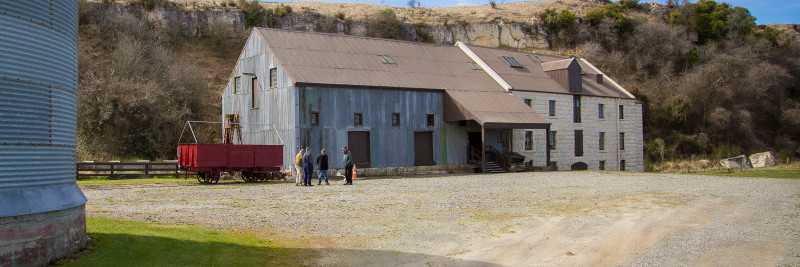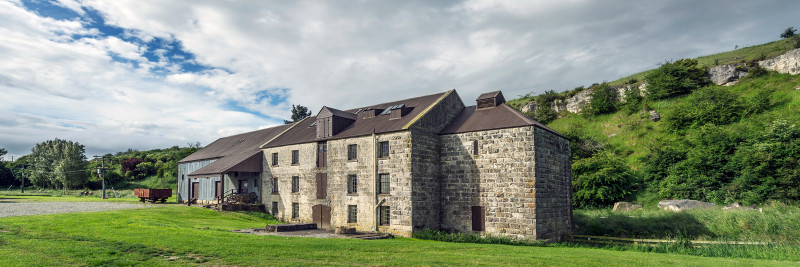Thursdays at the mill
Words
Caitlin Sykes
Imagery
Amanda Trayes
Heritage New Zealand magazine
Issue 156 | Ngahuru, Autumn 2020
For 15 years a group of blokes has met weekly at what must be one of the country’s ultimate ‘heritage sheds’. Heritage New Zealand magazine editor Caitlin Sykes and art director Amanda Trayes meet the volunteers at Maheno’s Clarks Mill complex.
It’s a Thursday morning, and after about an hour’s drive from Dunedin, we’ve just pulled up at the Clarks Mill complex in Maheno. The weather is glorious and unseasonably warm, despite snow still dusting the Kakanui Range, but the greeting from the mill’s volunteers is even warmer.
A group of blokes, all with ready smiles, shake our hands and introduce themselves. But before our visit progresses further, there’s someone else they’re anxious for us to meet.
“Come and meet Harry,” says volunteer John Chetwin, beckoning us across a bridge that spans the water race leading to the mill. On the other side sits a large memorial stone; close by is a young golden tōtara, beneath which, says John, the ashes of Harry Steenson are buried. If you want to tell the story of the volunteers who have brought Clarks Mill back to life, he says, you have to begin with Harry.
Born and bred in Oamaru and later retired to Kakanui, Harry’s association with the mill stretched back to the early 1980s. Closed in 1976, the mill and surrounding land were purchased by Heritage New Zealand (then known as the New Zealand Historic Places Trust) in 1977 and Harry, an architect, was involved in essential exterior work done on the mill soon after. And that involvement inspired an ambition – to see the historic place opened to the public. It was an ambition that proved infectious. John explains how he grew up in Dunedin but had worked in the public service in Wellington before retiring in the early 2000s to Kakanui. A keen tramper, he was lured to the area by the Kakanui Range – and just happened to buy the house next door to Harry’s. “Harry talked about wanting to open the mill to the public, and it was around 2005 that he started to really bring people together to bring that ambition to life,” recalls John.
“People think we’re only really clever and innovative today, but when you’re involved with something like this, you understand that’s not the case at all”
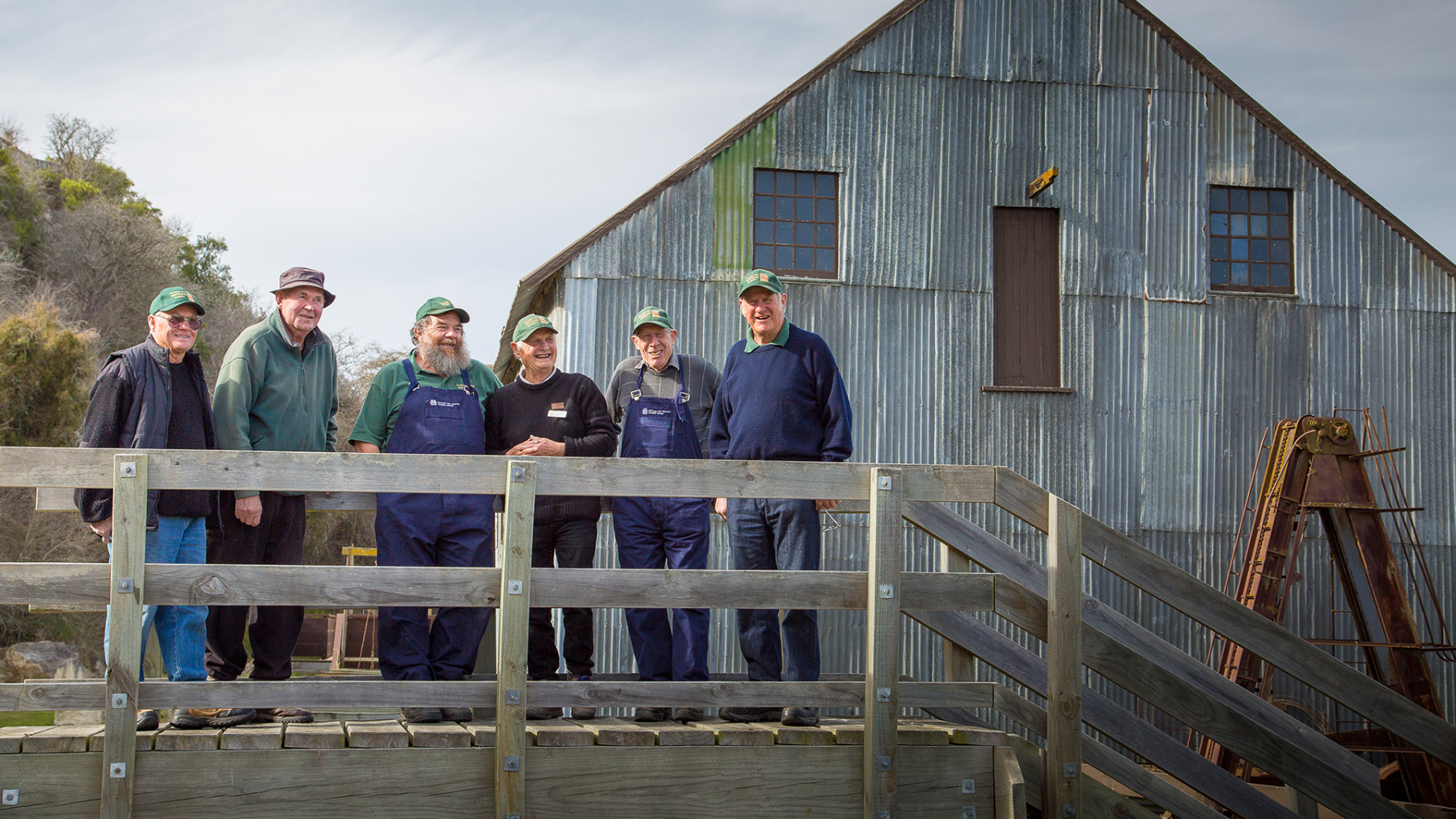
Clarks Mill volunteers (from left to right): Denis Spring-Rice, Warwick Clark, Jim Howden, Roger Blackburn and John Chetwin.
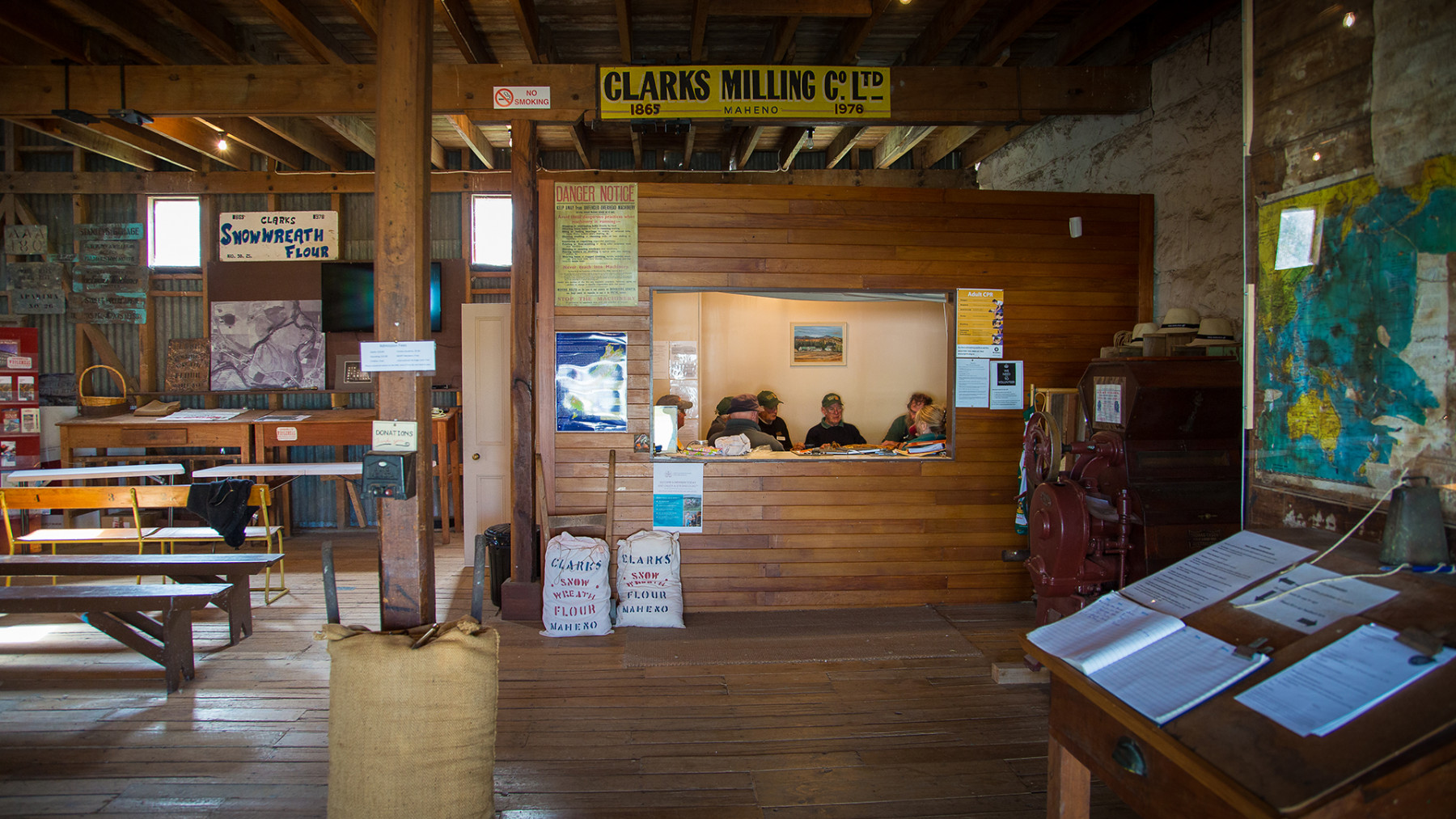
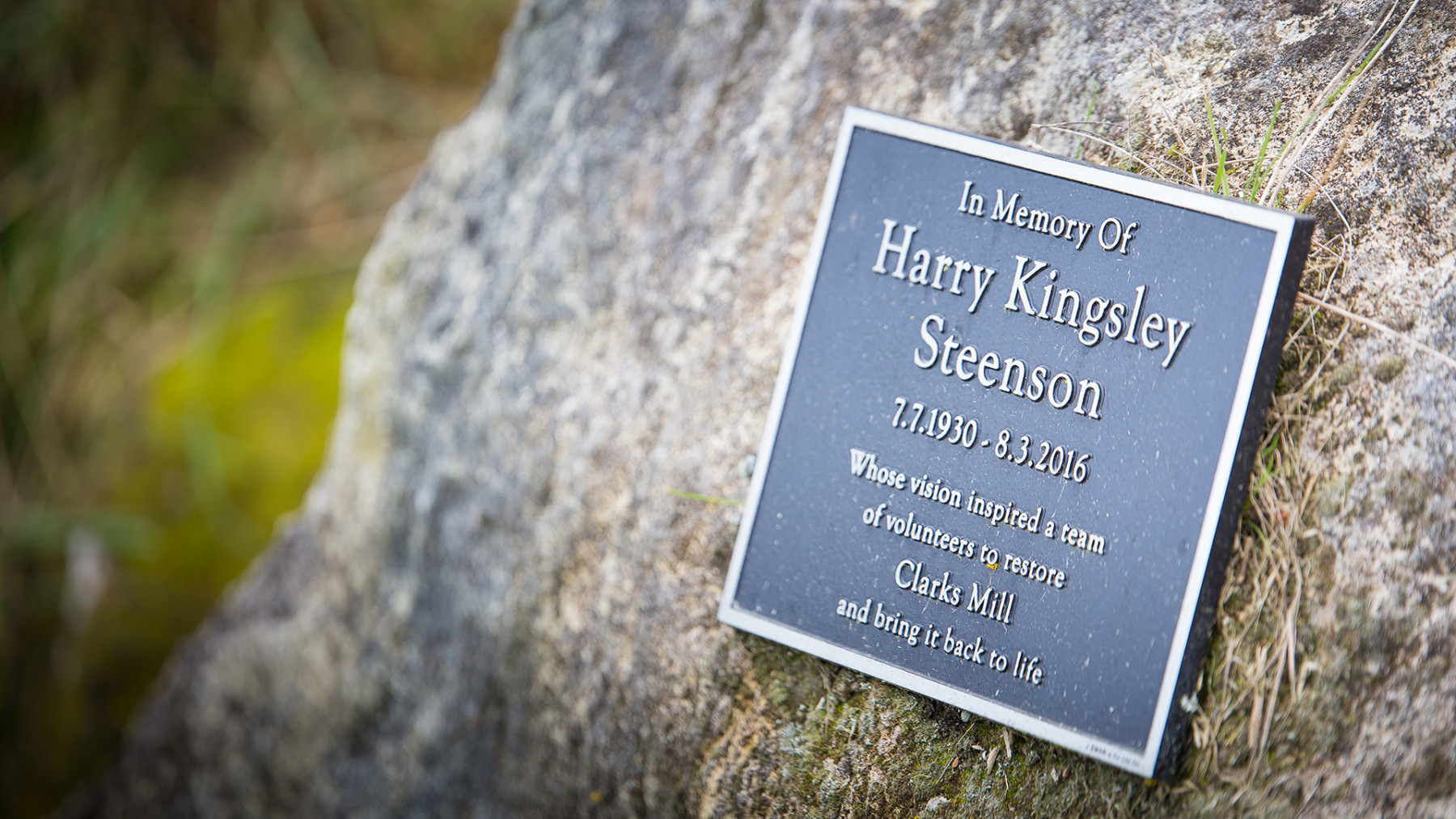
Left: The volunteers meet weekly on site. Right: The presence of Harry Steenson, who was a driving force behind Clarks Mill, is still felt at the complex.
“Originally, we had nothing: there was no budget, no maintenance programme. We had to start from scratch and build up a project plan.”
And so Thursdays at the mill began. The old Formica table around which the volunteers gathered each week for a coffee before getting down to work still sits in the mill, although today we’re invited into ‘the office’ – a pod that’s more recently been inserted inside the mill to better combat the North Otago chill and keep the group’s essential belongings secure and in one place.
While the mill itself was water-powered until the late 1960s, when it switched to electricity, you could argue that coffee has been the essential fuel for bringing it back to life in more recent years. “Getting together for a coffee is the whole foundation of these weekly gatherings,” laughs volunteer Roger Blackburn as we settle around the table in the pod, warm beverages in hand, with a delicious spread, including the essential cheese rolls, laid out before us.
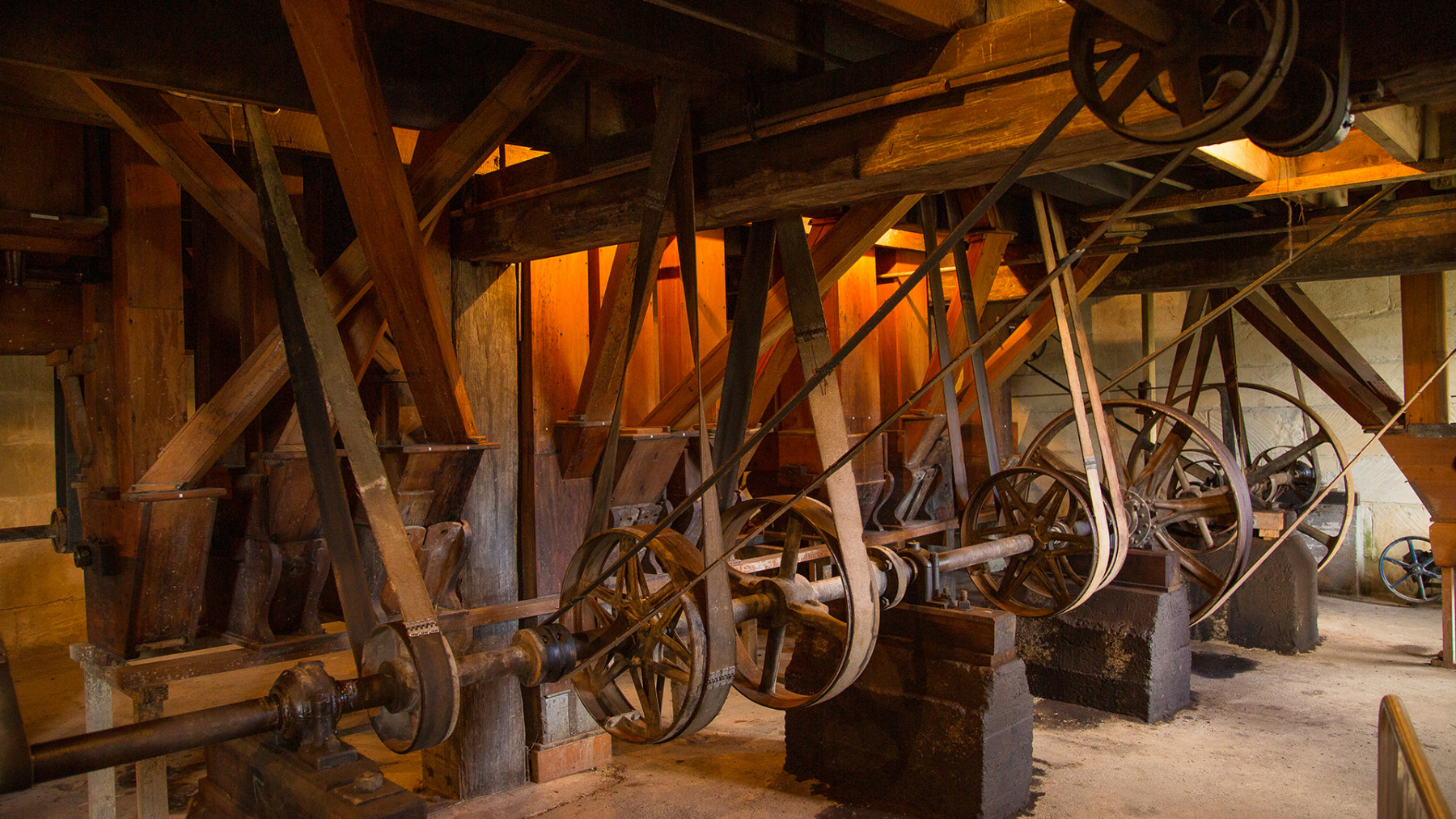
There are more than 100 belts in the machinery.
The volunteers explain how the focus of their initial work was to make the site safe for the public to enter. The vertiginous stairways that run up and down the mill’s four levels, for example, needed secure handrails, while extensive renovations were carried out on the interior woodwork, and barriers were installed around machinery before the site first opened to the public in 2008. Getting the mill machinery up and running took another three or four years.
The group’s members outline how they were each drawn to volunteer at the mill through a range of connections and experiences. Karl Ruddenklau, for example, is a third-generation farmer and cropper in the area and relished the opportunity to use his skills with machinery to keep its agricultural heritage alive, while Roger has been extensively involved in researching and documenting the mill’s history.
Providing a direct Clark link are volunteers Dave and Warwick Clark, both grandsons of some of the original Clark brothers who bought the mill in 1901.
While Dave wasn’t on hand during this Thursday visit, John says that with his background in both the history of the Clark involvement and things technical, Dave’s role in the practicalities of the restoration has been pivotal.
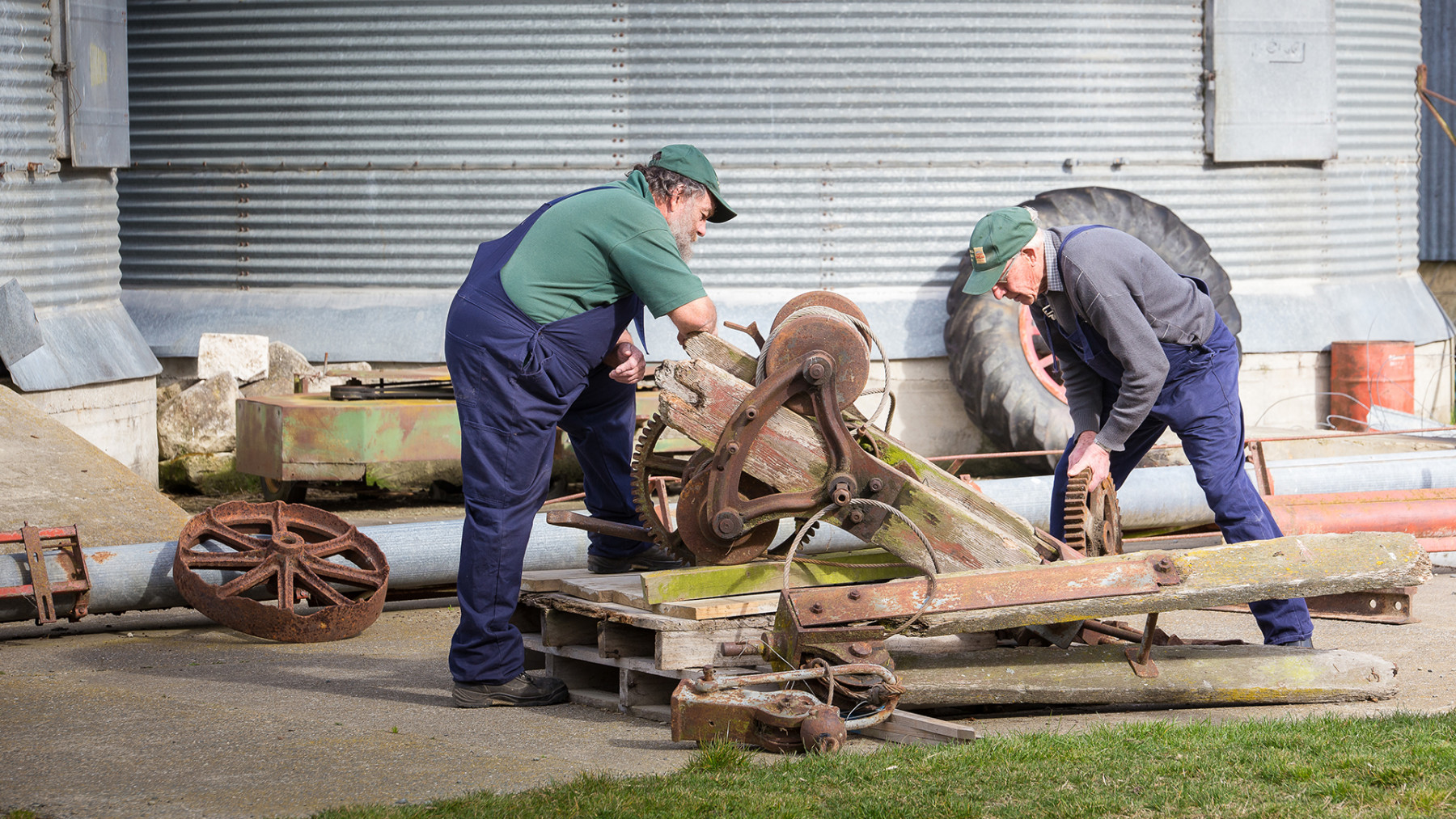
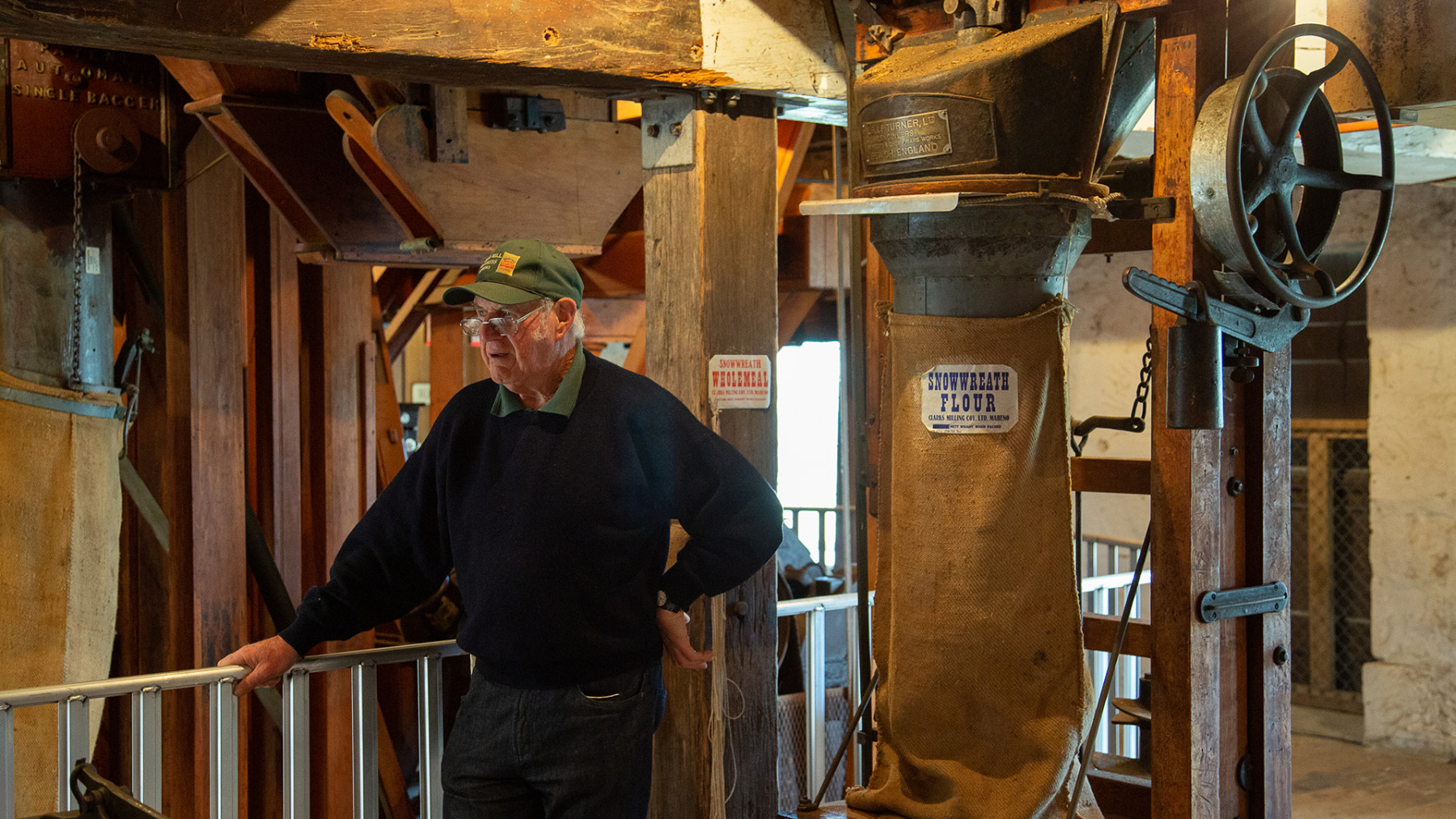
Left: Work continues on projects that communicate the mill's heritage. Right: John Chetwin provides a tour of the mill equipment.
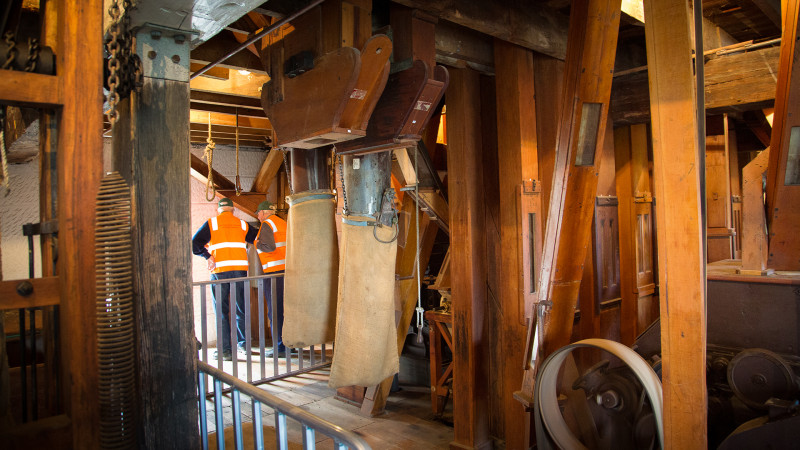
Safety barriers around the mill equipment are essential.
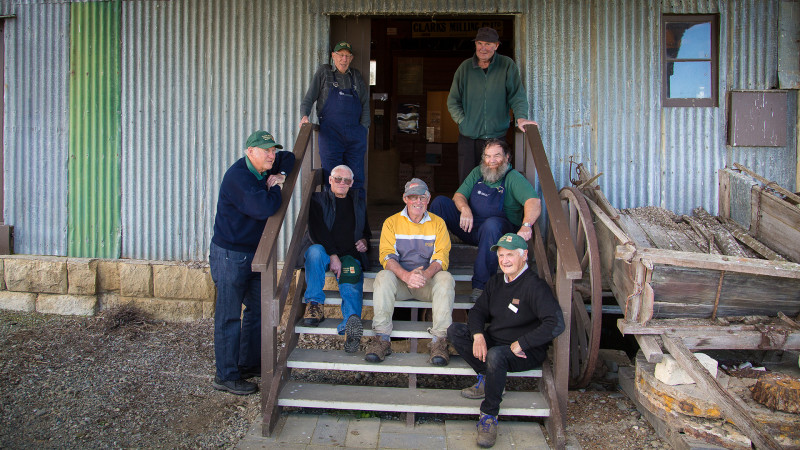
The group's talents and enthusiasm have created real payback.
Warwick actually once worked at the mill, as did his father, and it’s a tangible link that has proven invaluable in getting the mill up and running again. “It’s been a journey of discovery to figure out how the place and its equipment works,” explains Roger. “As a group we have a quirky collection of skills in areas, like engineering, carpentry and history, and collectively we’ve been using our skills and networks to piece together the puzzle.
“Having Warwick in the group has been hugely helpful, because often we’ll look at something and ask, ‘How did they do this?’ or ‘What did they use this for?’ and he’ll be able to tell us.”
Later John takes us on a tour of the mill, where we learn more about the milling process and the different machinery involved. Spread across four levels, the scale and complexity of the machinery is astounding. The mill originally used grinding stones but became a roller mill in 1893, using a total of 13 rolls to produce flour. There are more than 100 belts in the mill, and wooden chutes at every imaginable angle everywhere.
After Karl sounds a horn and the call of ‘clear’ is heard from all four floors, he fires up the machinery. The floor vibrates beneath our feet, and the sensation is of being close to the tracks as a train rumbles past. “It feels like a living organism,” comments Roger. “Given its age and complexity, it’s astounding how little ever goes wrong with the machinery.
“People think we’re only really clever and innovative today, but when you’re involved with something like this, you understand that’s not the case at all. You gain a real appreciation of the quality of the engineering.”
Ongoing maintenance of the complex’s buildings and machinery is a constant focus for the volunteers on Thursdays at the mill.
But there are also wider projects on the go that the group is using to increase visitors’ understanding of how the site once operated. As an example, they show us some pieces of machinery lying on the ground that have been brought recently onto the site by Dave.
The pieces comprise a crane, which the group aims to restore to help tell the story of the Clark family’s involvement in the quarrying industry. (Renowned for its quality, stone from the Clarks’ A1 quarry was used in the construction of a number of landmark buildings, including the Auckland Town Hall.)
The group is also there to greet the public when the site is open every Sunday from October to April (and running the machinery on the last Sunday of those months), as well as host group visits and three major open days annually.
Volunteer Jim Howden, who is also a visitor host at the nearby Heritage New Zealand-run property Totara Estate, says it’s here that the men’s passion for the place has also created real payback.
“Everyone who comes here is made welcome,” he says. “The genuine enthusiasm the group has for this place and its history really shows – and that rubs off on the people who visit.”
